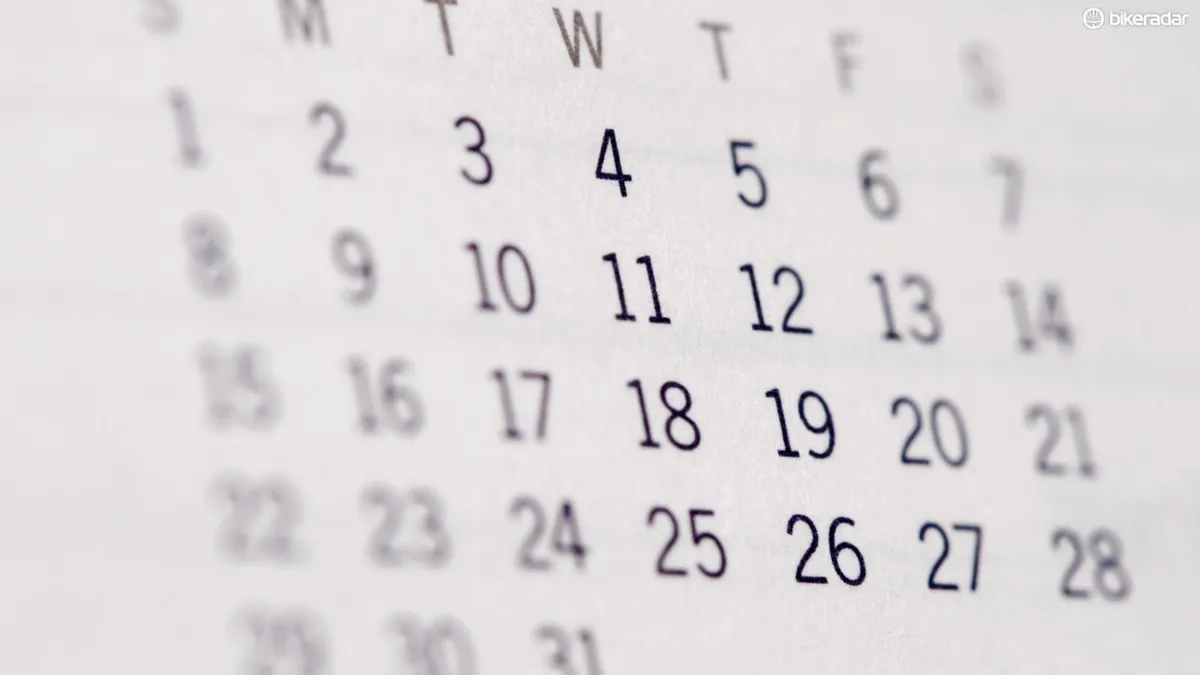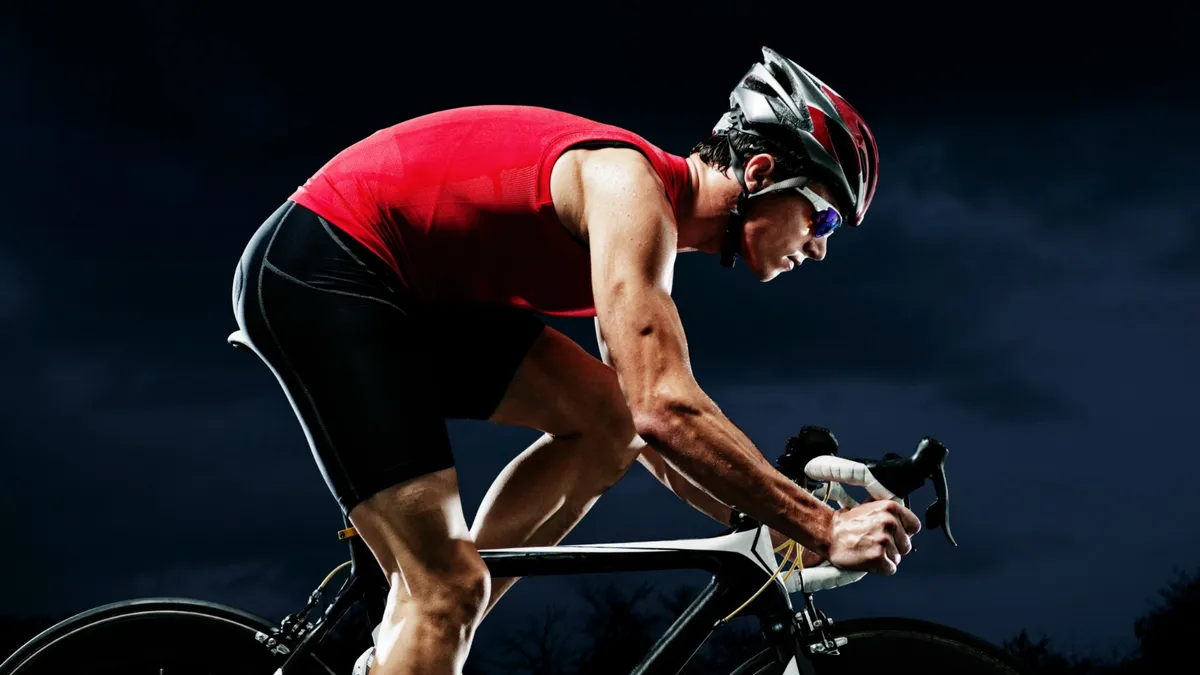This is a sponsored post in association with A1 Coaching.
If you give a man a bow and arrow and tell him: “Shoot”, his first question would probably be: “At what?”
When there’s no target, there is no purpose to shooting. He could just shoot the arrow anywhere, and wherever the arrow ends up would be wherever the arrow ends up: no target, no direction, and no purpose. He wouldn’t be a very good archer.
- Click here for free access to A1 Coaching’s winter training video series
- Know your numbers and set your threshold
- Smart weekly training for maximum performance
This is the ‘headless chicken’ phenomenon I began this series with: too many cyclists ‘just training’ with no target, no direction and no purpose.
On the other hand, if you gave the archer a target and challenged him to hit the bullseye, then everything changes. You have now given him something to aim at; something to challenge his skills against; something to measure his progress with, and something that gives purpose to his investment of effort, time and money.
All this by adding a simple target.
Setting targets
At this stage of the series, you’ll have learned the basic principles of smart training and will understand how some of the traditional methods just don’t make sense for the time-crunched cyclist. You will have enough basic knowledge to maximise your performance by embracing intensity and purposeful training.
But what are your key goals – what is your bullseye? When should you peak? What is the best sequence of training to get you in the best shape of your life for that key event?
The purpose of this post is to introduce you to basic annual planning: setting goals and breaking your year into particular periods of training with the aim of getting your different physiological systems in the best possible condition for your particular event.
The dividing up of these periods is referred to as ‘periodisation’.
What is periodisation?
In coaching we sometimes refer to the annual cycle of the year as the ‘macro training cycle’, and the different phases of training within the periodisation plan as ‘meso training cycles’. These will normally be a preparation phase, a base phase, a build phase, a specific phase, a race phase and a taper phase.
Within each of these phases we adjust the zonal training load to stimulate the different physiological systems in the best combination and sequence.
The structure of the plan will depend on the physiological demands of your particular event and the timing. For example, the annual periodisation plan would differ greatly between a rider aiming for a January cyclocross championship, a time-trialler aiming for a June 10-mile TT championship, and a sportive/fondo rider working towards a top performance at the Etape du Tour in July.
However, the principles will be the same for each and planning should work backwards from your particular goals. It is not possible for us to maintain optimum shape all year round, so we must aim to hit peak performance levels at pre-determined times.
If you are aiming for performance it is vital to understand that you can’t stay in top shape for very long periods – you have to ‘peak’ to reach your optimum fitness. However, that peak can only be short lived, and you can only achieve it two or three times per year. The reason for this is that your body just wouldn’t stand up to the training stress which the peaking involves. It is not an accident that Chris Froome arrives at the Tour de France in the very best shape.
With this in mind you should ideally target two or three ‘A-priority’ goals during the course of the competitive season, separated perhaps by four to six weeks. You can also include ‘B-priority’ events which are important for the athlete but which can serve as strategic importance in your build-up to key events.

Mapping out the macro plan for real-life cyclists
Most suggested annual training plans look very neat. However, for most of us amateurs, life can get a little complicated and planning has to take account of this.
So, for the time-crunched everyday cyclist, a rigid, perfect plan isn’t always possible. Therefore, at A1 Coaching we begin with the athlete by identifying any periods when there will be zero and limited training availability. Examples might include family vacations, busy periods at work or exam time for students. Equally, we identify periods when more training is possible.
By mapping out these periods, along with the A- and B-priority events, we can adjust the detail of the training phases around the periods of training availability, in combination with key event dates.
In this way, using real-life planning, we can begin to turn potentially negative circumstances into positive outcomes. A week of forced, reduced training availability, for example, will be built into the plan as a ‘recovery week’.
Now for the macro plan
As I explained above, the annual training cycle is referred to as the macro cycle, and the various blocks within it as meso cycles.
Each meso cycle, in turn, will contain a number of micro cycles – periods of three or four weeks followed by a recovery week to help the training load to take effect and fitness to fully develop.
These recovery periods are vital – so important that I am devoting the next and final post of this blog series entirely to the topic.
More often than not, over the course of a four week micro cycle, life pops up. You may have to stay late at work, the kids are sick or you have compulsory social gatherings. Whatever the reason, your training plan should be fluid and dynamic – you don’t want to have just completed a reduced volume ‘recovery’ week only to have an enforced recovery again the following week because of a life circumstance.
In other words, you must know the principles and have enough knowledge to make wise adjustments as you go along.

Flipping the base period on its head
At this time of year (in the northern-hemisphere winter, at least) most cyclists are in their base period and this is what I am concentrating on in this series of articles. The table below gives a summary of each period, but the detail of each period would be too great for this series.
Traditional training philosophies dictated that we should ride for endless hours during base-training phase in order to develop an aerobic base and improve our aerobic efficiency. This is particularly problematic for those of us working and based in colder climates – the time we are being asked to log the highest volume is a time when the weather is at its worst and daylight shortest.
MACRO
TRAINING
CYCLE
ArrayIn recent years there’s been a break from this traditional thinking by more enlightened coaches and riders who are advocating a reverse periodisation structure. This system turns conventional wisdom on its head by taxing the upper training zones early in the training cycle.
This is great news for us time-crunched athletes who don’t like to ride endless kilometres on cold, dark evenings. By focusing on physiological systems from the top down we can ‘pull’ each system up and elicit a greater training adaptation than the traditional bottom-up structure.
This has been the focus of this series – challenging old beliefs and using the latest research for the benefit of the everyday, time-crunched rider.
Our A1 Coaching 12-Week Winter Training Plan is built around this emerging research and thinking, and this has profound effects for the working, time-crunched rider. Our racing category, or place in the sportive/fondo or Sunday group spin, need no longer be determined by available training hours.
Adherence to these top-down training principles and structures – with high-intensity ‘pulling up’ your fitness – will mean that you can animate your events where previously you were a passenger.
